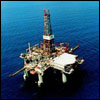DNV GL, a leading technical advisor in the oil and gas industry, has predicted a positive outlook for the sector in 2014. It has also revealed that in spite of its positive outlook, there would a tighter monitoring of capital expenditure (capex) due to rising operational costs, shortage of skilled professionals and competition from international rivals causing professionals to focus on spending on projects that would provide the greatest return on investment.
According to the report, the proportion of companies planning to increase investment in new projects has declined by 18 percent over the past three years, from a high of 63 per cent in 2012 to just 45 per cent in 2014. The findings, from a new research report titled ‘Challenging Climates: The outlook for the oil and gas industry in 2014’ undertaken on behalf of DNV GL, provides a snapshot of industry sentiment about the year ahead. Some of the key findings include:
Skills shortage
Despite some signs of caution, the overall outlook for the industry is confident. However, 47 per cent of respondents consider skills shortages as the top barrier to growth. The research found that there is a demand of project managers (42 per cent); offshore-related engineers (24 per cent), and safety and risk engineers (16 per cent) in Asia-Pacific where many of the world’s largest projects are located. The research further disclosed that given the rapid growth of shale oil and gas production and changing nature of projects in North America, there was an acute skills shortage of 59 per cent.
Elisabeth Tørstad, CEO – Oil & Gas, DNV GL, said, “The sector is increasingly moving into challenging environments which require deep technical expertise to provide solutions, yet many companies are faced with an ongoing skills shortage. This need is driving up salaries at a time when there is already pressure to reduce costs. While technology can go some way to plugging the gap, it can’t fully replace human intervention.”
According to Torstad, the industry needs to take a longer term view of building professional skills rather than putting the brakes on nurturing talent when the oil price weakens. The cost of exploration and production is rising, the industry’s pool of skilled professionals is decreasing and companies are feeling greater pressure on their overheads. This is all leading to great focus and a degree of ‘belt tightening’ across the industry with a view to keeping a tighter rein on capital expenditure.
Cost increase
The respondents expect to keep a closer watch on costs. About 62 per cent of the industry players intend to pressure suppliers to curb cost increases by 2015, especially across Asia. In response to rising costs, operators will seek to rely on larger supply chain partners which are more capable of providing a consistent global service, according to the report. Whereas 22 per cent survey respondents says that their company would increase its work with larger partners, compared with just 6 per cent in 2012.
DNV GL’s research also affirms that operators would try to focus on controlling risk and cost by seeking greater standardisation in their procurement approaches. This gives rise to greater interest in operators centralising, standardising and streamlining their supply chain to avoid costs in creating new solutions.
Richard Bailey, Divisional Director in Asia Pacific for DNV GL, said, “The Asia Pacific region is home to some of the world’s most capital-intensive projects, many of which are facing major cost inflation as operators come under pressure to bring them on stream on time.”
According to Bailey, the pressure would be on suppliers to innovate to reduce costs and show value through providing access to scarce, in-demand skills and by demonstrating real quality in the products and services they deliver.
Oil and gas prices
Uncertainty over oil and gas prices is expected to be more prevalent in 2014. Nearly 23 per cent of industry professionals expect the prices to weaken, while 36 per cent remain unsure.
Further, more than one-third of operators intend to acquire partners with expert knowledge and skills to move into tougher exploration and production sites, with the rest deciding to increase alliances with others to share knowledge in order to cope with more challenging environments.
The report also reveals that the US, Brazil and Australia are the top investment destinations for 2014, with larger operators seeking to expand into challenging new environments such as deepwater sites in East Africa and the Arctic.











